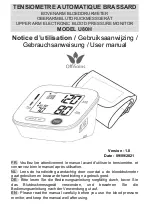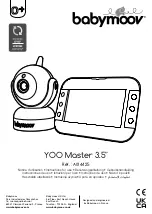
Introduction
1-4
1.3 Display
Overview
Reference Drawings:
Shop Drawing; AF-3160-8-32-34-Mono-Gen2 ............
Drawing B-178625
Shop Drawing; AF-3160-40/48***-34-Mono-Gen2 ......
Drawing B-178626
Daktronics AF-3160 Galaxy displays are designed and manufactured for
performance, reliability, easy maintenance and long life. The pixels have a 34mm
center-to-center spacing, and are lit using LEDs (light emitting diodes). A light
sensor on the front of the first or primary display is used for automatic dimming of
the LEDs based on the ambient light levels. The configuration of pixels depends on
the model of display ordered.
Refer to the drawings referenced above for the approximate size, weight, and power
requirements for your model of display.
The Galaxy model numbers are described as follows:
AF-3160-RRCCC-34-X-X(X)
AF-3160
Outdoor 34 mm Louvered Galaxy Display
RR
Number of Rows High (8-48)
CCC
Number of Columns Long (Up to 144 Columns, Standard)
34
34 mm pixel to pixel spacing
X
LED Color (monochrome or tri-color)
X(X)
PM – Primary-Mirror or PS – Primary-Secondary
M – Mirror Display, S – Secondary Display
A typical display system consists of a Windows
®
based personal computer (PC)
running Venus
®
1500 software and one or more displays. The displays are offered as
single-face units, which are single-sided stand-alone displays. They can become
double-faced by mounting them back-to-back with a second unit.
Venus 1500 is a software package that runs under Windows 98, ME, NT
®
4.0, 2000,
or XP Home/Professional operating systems on an IBM
®
-compatible computer.
Refer to the Venus 1500 Software manual,
ED13530
, for installation and operation
of the Venus 1500 editing station.
1.4 Component
Identification
The following illustrations depict some of the more commonly accessed Galaxy
display components. Because Daktronics occasionally alters standard design to meet
customer needs, the actual display design may vary slightly from the illustrations
below.
This is only a brief overview. Refer to
Section 4
for additional information on
maintaining the various display components.
Com Port:
A COM port is a connector on the back of the control computer. The
COM port is used to control the display network through either a 9- or a 25-pin serial
connector.
Содержание Galaxy Series
Страница 18: ......
Страница 36: ......
Страница 56: ......
Страница 57: ......
Страница 58: ......
Страница 59: ......
Страница 60: ......
Страница 61: ......
Страница 62: ......
Страница 63: ......
Страница 64: ......
Страница 65: ......
Страница 66: ......
Страница 67: ......
Страница 68: ......
Страница 69: ......
Страница 70: ......
Страница 71: ......
Страница 72: ......
Страница 73: ......
Страница 74: ......
Страница 75: ......
Страница 76: ......
Страница 77: ......
Страница 78: ......
Страница 79: ......
Страница 80: ......
Страница 81: ......
Страница 82: ......
Страница 83: ......
Страница 84: ......
Страница 85: ......
Страница 86: ......
Страница 87: ......
Страница 88: ......
Страница 89: ......
Страница 90: ......











































